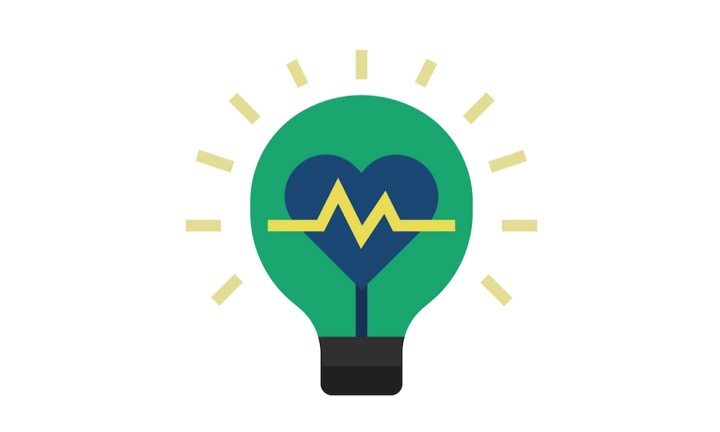Examples of design thinking and human-centered design in the medical devices and pharmaceutical industries
Innovation in the medical devices and pharmaceutical industries is crucial for the health and well being of our communities. Through the use of methodologies like design thinking and human-centered design, hospitals and other medical organizations have been able to better serve their patients and address specific problems or needs. Learn more about these innovation breakthroughs in this post highlighting a few key examples of how design thinking and human-centered design have been used in medical devices and pharma.
What is design thinking and human-centered design?
Design thinking is one of several approaches to innovation that focuses on developing an understanding of the people for whom we’re designing products or services for. This process involves brainstorming, prototyping, and experimentation to end at a solution that properly solves the problem at hand.
Human-centered design is also very people-focused, and typically consists of the three phases: inspiration (learning from the end user), ideation (brainstorming), and implementation (bring solution to life and eventually to market).
Take a closer look at design thinking and human-centered design on our blog.
Examples of innovation in the medical devices and pharmaceutical industries
Now let’s look at examples of innovation in action in these two medical industries.
1. PillPack | Online Prescription Service
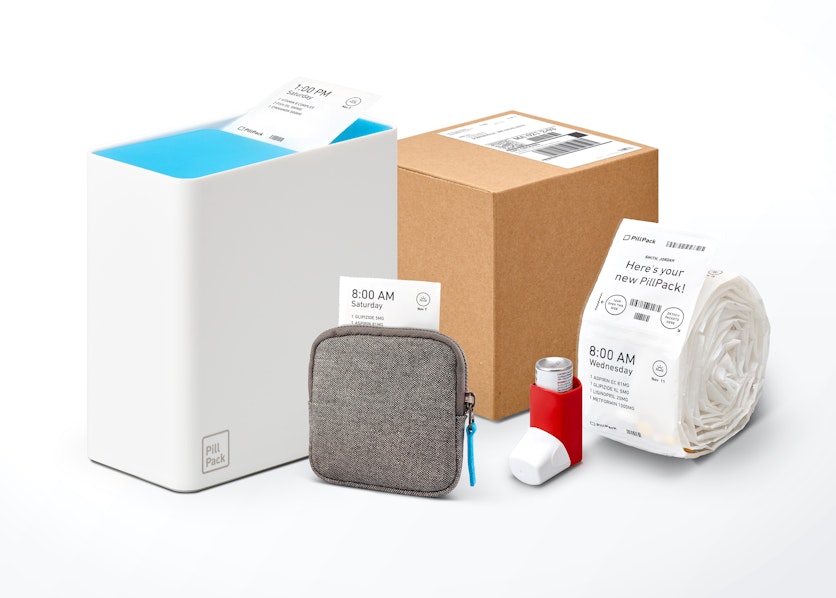
PillPack, an IDEO startup, is an online prescription service that offers home delivery. This innovative startup wanted to simplify the process of picking up and managing prescriptions. Their solution? An online service that allows your doctor to send your prescription straight to the pharmacists at PillPack. Then, they’d organize the medications into presorted, personalized packets that are delivered right to your doorstep. By utilizing the principles of design thinking, PillPack was able to design a solution for seniors who struggle to manage their various medicines, or younger patients with active lifestyles who don’t have the time or energy to manage their prescriptions.
In June of 2018, Amazon acquired PillPack for $1 billion.
2. Phantasy Pharmacy | Kid-Friendly Medicine
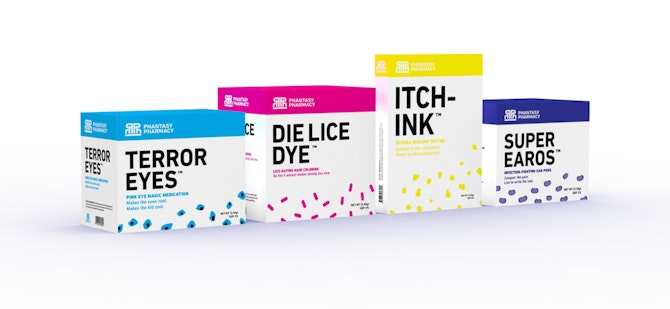
Many of us may remember the painful and embarrassing experience of having lice as a kid. This IDEO project set out to find ways to turn kids into the heroes of their own lives with empathetic tools for childhood ailments and illnesses. By changing painful, awkward kid experiences as rites of passages and superpowers, this project was able to unlock kid-approved medical innovations. Phantasy Pharmacy used design thinking to strengthen kids self-esteem and make childhood illnesses not as bad as they seem.
3. The CONTOUR NEXT ONE | Blood Glucose Meter
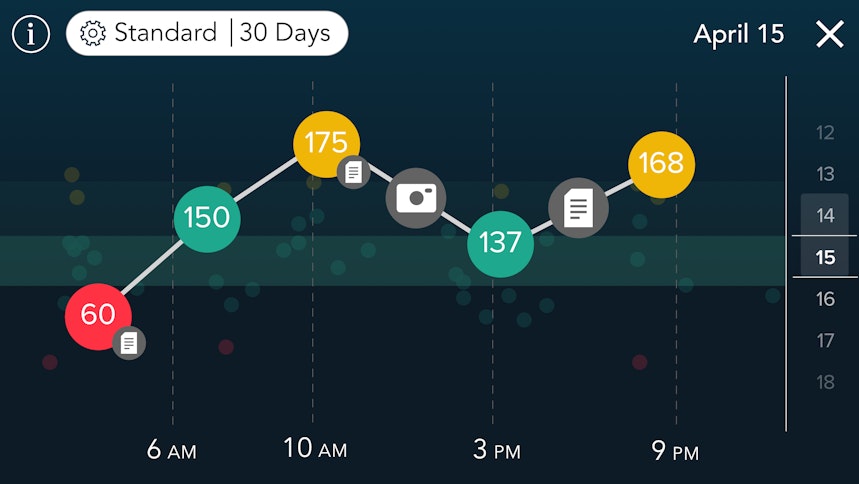
Monitoring diabetes isn’t easy – one challenge that Ascensia Diabetes Care recognized. Utilizing the support of IDEO and the tools of human-centered design, Ascensia created the CONTOUR NEXT ONE and CONTOUR DIABETES – two tools that make keeping diabetes in check a bit easier. CONTOUR NEXT ONE is a blood glucose meter designed to look and behave like today’s modern tech devices – reducing the stigma of having to check your blood sugar in public. This simple system allows patients to upload their blood glucose readings automatically to the CONTOUR DIABETES app and make informed, real-time decisions about their health.
4. GE Healthcare | Kid-Friendly MRI
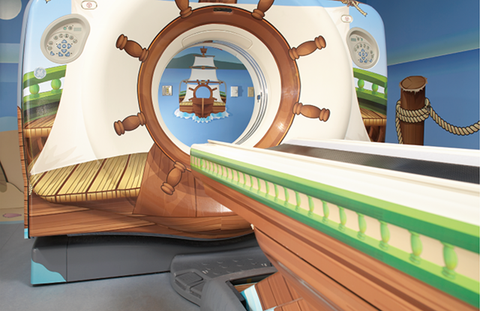
Doug Dietz, a lead designer of high-tech medical imaging systems for GE Healthcare, observed that getting an MRI scan was a scary and traumatic experience for young children. Utilizing concepts from design thinking and human-centered design, GE Healthcare set out to change this experience for kids. After ideation and observation, Doug created a prototype and tested it at the University of Pittsburgh Medical Center children’s hospital. This prototype transformed the MRI suite into a kid’s adventure story – with colorful decals attached to the outside of the machine and every surface in the room. Machine operators were also given a script to follow to lead their young patients through the adventure.
The result? An experience that was no longer scary for kids – but actually kind of fun! The number of pediatric patients needing to be sedated dropped dramatically, and patient satisfaction climbed over 90%.
5. Mayo Clinic | Patient App

Back in 2012, Mayo Clinic set out to develop a mobile app for patients and visitors of their clinic. Using human-centered design, they were able to develop an app that allowed patients to review appointments, clinical documents, lab results, care equipment, and more. The app was a success – it was downloaded more than 1,000 times on the first day of launch. Since then, the app has also been innovated to further help patients monitor their medications and health information.
6. CONRAD | MPii

CONRAD, a global non-profit focused on women’s reproductive health, wanted to develop a product for women to protect themselves against HIV. Their solution, microbicides, was incredibly effective at preventing the infection, but women were not taking it because of the stigma associated with HIV. To bridge this gap, MPii was created – the Microbicide Product Introduction Initiative. This program of five interconnected projects was designed to break the stigma and increase the use of microbicides to protect against HIV. After interviews and human-centered design research, CONRAD and IDEO discovered that privacy, pride, and beauty are interwoven – and that the right product would need to focus on these three elements. By embracing the aesthetic of an everyday cosmetic and creating an empowering brand image, the product became desirable to women. This vibrant starter kit tested extremely well with women and proved that their initial challenges could be overcome through human-centered design and innovative processes.
7. California Health Care Foundation | Health Insurance Enrollment
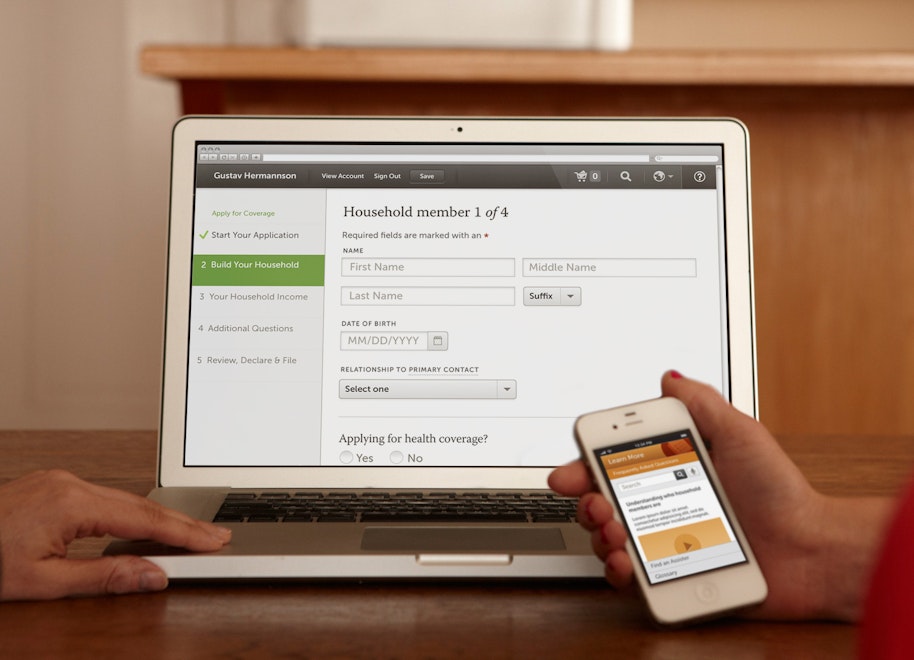
When the Patient Protection and Affordable Care Act (ACA) was fully implemented in 2014, states were required to develop ways for people to enroll in health insurance plans. To aid with meeting the requirements, a coalition of nine national and state-based foundations in California developed a digital enrollment prototype to streamline the process. Using innovation and collaborative ideation techniques, the resulting 300 page design manual and prototype illustrated an intuitive, simple approach to enrollment.
8. Andiamo | 3D Braces
Andiamo is an innovative company that (among other products) produces 3D-printed orthotics for kids. Noting the overly complicated and time-consuming process of making custom-fitted braces, the company developed a solution that made it simple and easy for kids. Andiamo is completely mobile, designed for a non-invasive turnaround period that is especially helpful for children with disabilities.
In this post, we’ve covered some top examples of how design thinking and human-centered design have been used to create truly innovative solutions in the medical devices and pharmaceutical industries. Find more helpful resources, guides, and tips on our innovation and design thinking blog.
